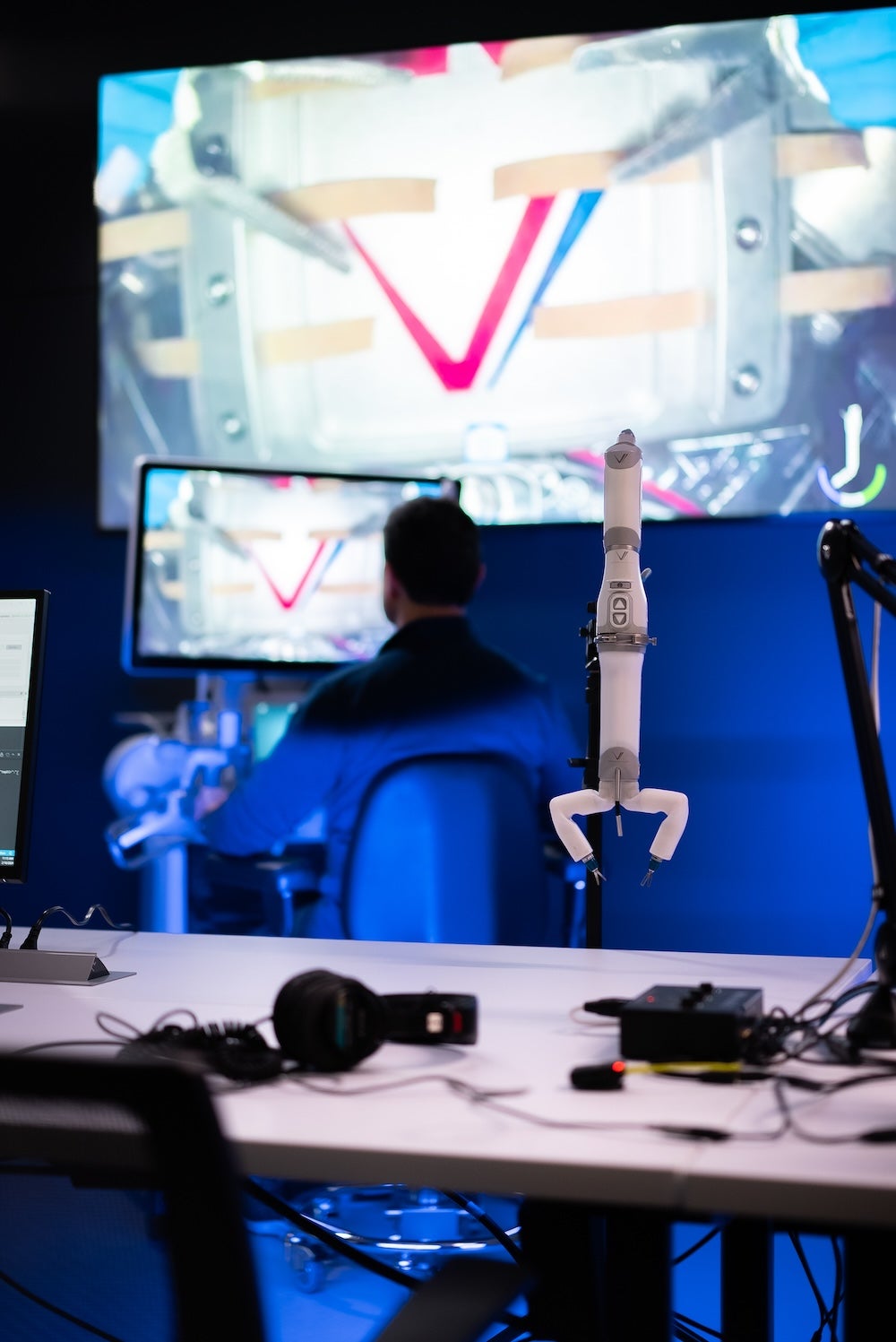Researchers successfully completed the first remote, zero-gravity “surgery” procedure aboard the International Space Station. Over the weekend, surgeons based at the University of Nebraska spent two hours testing out a small robotic arm dubbed the Miniaturized In Vivo Robotic Assistant, or spaceMIRA, aboard the ISS as it orbited roughly 250 miles above their heads.
But don’t worry—no ISS astronauts were in need of desperate medical attention. Instead, the experiment utilized rubber bands to simulate human skin during its proof-of-concept demonstration on Saturday.
[Related: ‘Odie’ is en route for its potentially historic moon landing.]
Injuries are inevitable, but that little fact of life gets complicated when the nearest hospital is a seven-month, 300-million-mile journey away. But even if an incredibly skilled doctor is among the first people to step foot on Mars, they can’t be trained to handle every possible emergency. Certain issues, such as invasive surgeries, will likely require backup help. To mitigate these problems in certain situations, remote controlled operations could offer a possible solution.
Designed by Virtual Incision, a startup developing remote-controlled medical tools for the world’s most isolated regions, spaceMIRA weights only two pounds and takes up about as much shelf-space as a toaster oven. One end of its wandlike is topped with a pair of pronglike arms—a left one to grip, and right one to cut.
[Related: 5 space robots that could heal human bodies—or even grow new ones ]
Speaking with CNN on Wednesday, Virtual Incision cofounder and chief technology officer Shane Farritor explained spaceMIRA’s engineering could offer Earthbound the hands and eyes needed to perform “a lot of procedures minimally invasively.”
On February 10, a six-surgeon team in Lincoln, Nebraska, took spaceMIRA (recently arrived aboard the ISS via a SpaceX Falcon 9 rocket) for its inaugural test drive. One arm gripped a mock tissue sample, and the other used scissors to dissect specific portions of the elastic rubber bands.

While researchers deemed the experiment a success, surgeons noted the difficulty in accounting for lag time. Communications between Earth and the ISS are delayed about 0.85 seconds—while a minor inconvenience in most circumstances, even milliseconds can mean a matter of life or death during certain medical emergencies. Once on the moon, Artemis astronauts and NASA headquarters will deal with a full 1.3 seconds of delay between both sending and receiving data. On Mars, the first human explorers will face a full hour of waiting after firing off their message, then waiting for a response. Even taking recent laser communications breakthroughs into consideration, patience will remain a virtue for everyone involved in future lunar and Mars expeditions.
This means that, for the time being, devices like spaceMIRA are unlikely to help in split second medical decisions. But for smaller issues—say, a lunar resident’s stitch up after taking a tumble, such medical tools could prove invaluable for everyone involved. In the meantime, Virtual Incision’s remote controlled equipment could still find plenty of uses here on Earth.





